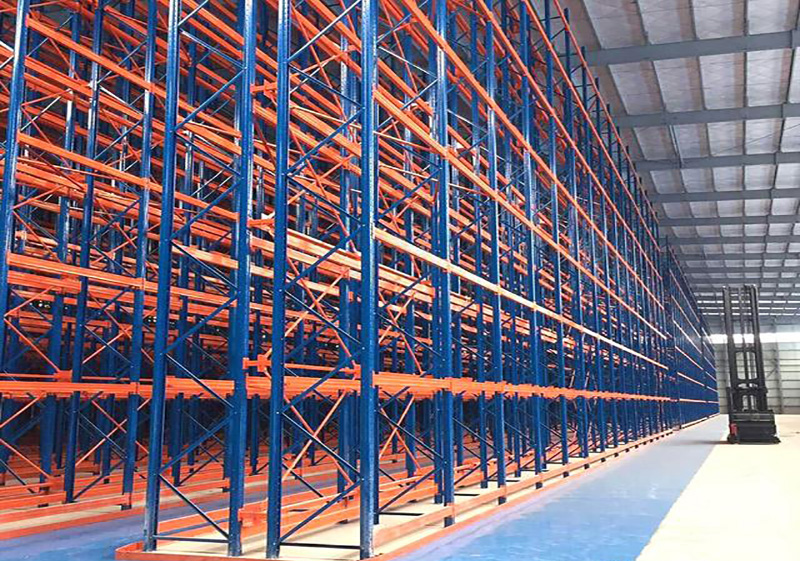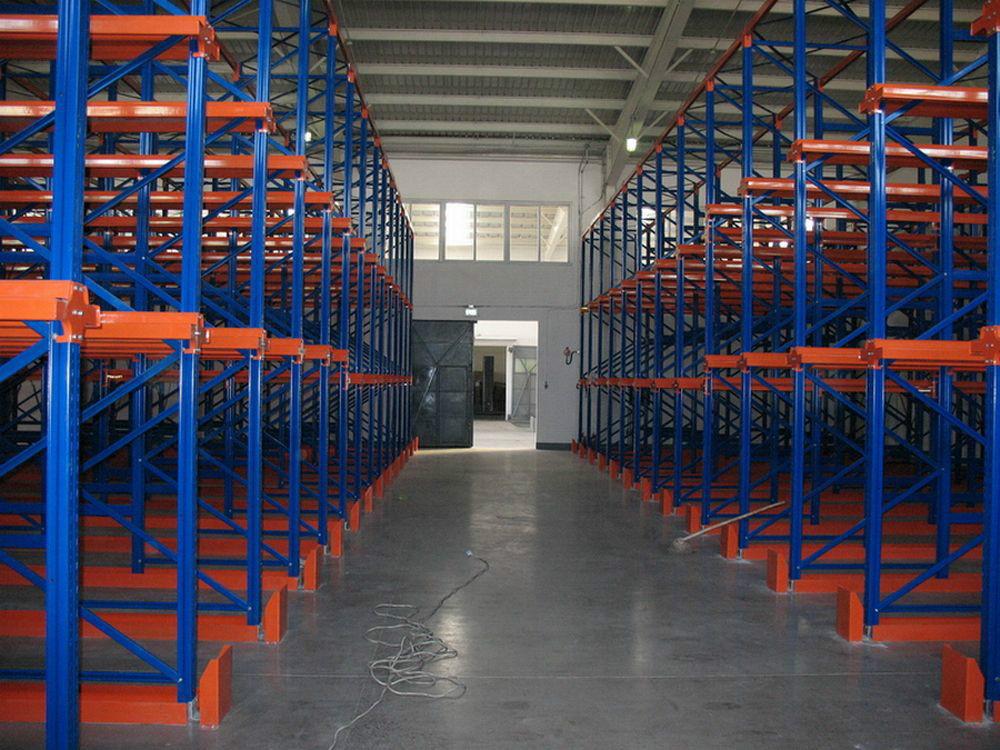In the relentless pursuit of warehouse efficiency, accuracy, and scalability, the automated pallet racking system has emerged as a transformative powerhouse. Moving beyond traditional static racking, these sophisticated solutions integrate advanced technology to store, retrieve, and manage palletized goods with minimal human intervention. This comprehensive guide delves deep into the world of automated pallet racking systems, exploring their core components, operational benefits, key features, implementation considerations, and the compelling business advantages they deliver.

What is an Automated Pallet Racking System?
At its core, an automated pallet racking system (often referred to as an AS/RS - Automated Storage and Retrieval System for pallets) is a combination of high-density storage racking structures and computer-controlled machinery designed to automatically place and retrieve pallet loads. Unlike conventional racking requiring forklifts and operators to navigate aisles, the automated pallet racking system utilizes robotic cranes (stacker cranes) that travel within the rack structure itself or along fixed tracks, directed by sophisticated Warehouse Management Software (WMS) or Warehouse Control Systems (WCS). This integration creates a highly efficient, dense, and precise storage environment, revolutionizing how warehouses handle palletized inventory.
Core Components of an Automated Pallet Racking System
Understanding the anatomy of an automated pallet racking system is crucial:
The Racking Structure: This is the physical backbone, typically constructed from heavy-duty steel. Designs vary significantly based on the specific AS/RS technology employed (e.g., unit-load AS/RS, shuttle systems). It's engineered for extreme stability, high vertical storage (often exceeding 100 feet), and precise tolerances to ensure smooth crane operation. The structure defines the storage lanes and levels.
Storage & Retrieval Machinery (S/R Machines / Stacker Cranes): These are the robotic workhorses. Equipped with telescopic forks or grippers, they move bi-directionally (horizontally and vertically) within dedicated aisles or along the rack face. They receive instructions from the control system to perform putaway and retrieval tasks autonomously and at high speeds. Some systems feature aisle-changing cranes for even greater flexibility.
Conveyor Systems & Material Handling Interfaces: Automated pallet racking systems rarely operate in isolation. They integrate seamlessly with inbound and outbound conveyor networks, automated guided vehicles (AGVs), or autonomous mobile robots (AMRs). These systems transport pallets to and from the entry/exit points (pickup and deposit - P&D stations) of the AS/RS, creating a continuous flow.
Pickup and Deposit (P&D) Stations: These are designated locations, often at the end of aisles or integrated with conveyors, where pallets are transferred between the external material handling system and the S/R machine. Operators or automated systems load/unload pallets here.
Warehouse Control System (WCS) / Warehouse Management System (WMS): The intelligence hub. The WMS manages inventory data, order processing, and overall warehouse strategy. The WCS acts as the real-time traffic controller, translating WMS instructions into precise commands for the S/R machines, conveyors, and other automated equipment, orchestrating the entire automated pallet racking system operation. Advanced systems utilize sophisticated algorithms for task sequencing and optimization.

Key Features and Operational Advantages
The shift to an automated pallet racking system delivers a suite of powerful features and tangible operational benefits:
Unmatched Space Utilization & Density: By eliminating the need for wide forklift aisles (often reducing aisle widths to just 5-7 feet compared to 12-15+ feet for VNAs) and maximizing vertical cube utilization, automated pallet racking systems can dramatically increase storage capacity within the same footprint – often by 50-100% or more compared to conventional racking. Deep-lane systems (like shuttle systems) push density even further.
Exceptional Throughput Speed and Accuracy: S/R machines operate at consistent, high speeds (significantly faster than human-operated forklifts), 24/7 if needed. Combined with precise computerized control, putaway and retrieval times are minimized, and errors due to misplacement or incorrect picks are virtually eliminated, leading to near-perfect inventory accuracy.
Enhanced Safety: Automating the movement of heavy pallets in high-bay environments drastically reduces the risk of accidents involving personnel, such as collisions, falls from height, or pallet drops. Operators interact with the system primarily at P&D stations, away from the high-risk storage aisles.
Reduced Labor Dependence and Costs: While not eliminating labor entirely (system supervision, maintenance, P&D station handling), an automated pallet racking system significantly reduces the need for a large fleet of highly skilled forklift operators, especially for high-bay or cold storage applications. This mitigates labor shortages and associated costs (wages, benefits, training, turnover).
Optimized Inventory Management & Traceability: Integrated with WMS/WCS, every pallet movement is tracked in real-time. This provides unparalleled visibility into stock levels, locations, and movement history (FIFO, FEFO, LIFO easily enforced), streamlining cycle counting, improving order fulfillment accuracy, and enhancing traceability for compliance.
Tangible Business Benefits and ROI
Investing in an automated pallet racking system translates into significant bottom-line advantages:
Significant Operational Cost Savings: Reductions in labor costs, decreased product damage, lower energy consumption (especially in climate-controlled warehouses due to reduced air volume needing conditioning), and minimized inventory shrinkage contribute directly to a healthier bottom line.
Improved Scalability and Flexibility: Modern automated pallet racking systems are modular. Capacity can often be increased by adding more racking modules or S/R machines. Software updates can optimize workflows as business needs evolve, offering flexibility that traditional systems struggle to match.
Faster Order Fulfillment & Enhanced Customer Service: Increased throughput and accuracy directly translate to faster order processing and shipping times. Improved inventory visibility ensures better order promise dates and stock availability, leading to higher customer satisfaction and loyalty.
Reduced Product Damage: Precise robotic handling and elimination of human error during storage/retrieval significantly reduce incidents of pallet and load damage compared to manual forklift operations.
Data-Driven Decision Making: The wealth of operational data generated by the WCS/WMS (cycle times, machine utilization, inventory velocity) provides invaluable insights for continuous process improvement, capacity planning, and strategic decision-making.
Competitive Advantage: Implementing an automated pallet racking system positions a company at the forefront of logistics efficiency, enabling it to handle higher volumes, meet tighter delivery windows, and operate more cost-effectively than competitors reliant on manual methods.
Implementation Considerations: Planning for Success
Deploying an automated pallet racking system is a major capital project requiring meticulous planning:
Thorough Needs Analysis & Feasibility Study: Clearly define current and future business requirements (SKU profiles, throughput volumes, peak demands, growth projections). Assess building suitability (floor flatness, ceiling height, column spacing, floor load capacity, fire protection). Conduct a detailed cost-benefit analysis and ROI projection.
Technology Selection: Choose the right type of AS/RS for your needs:
Unit-Load AS/RS: Traditional crane-in-aisle for full pallets.
Mini-Load AS/RS: For smaller loads/cases, but principles apply.
Shuttle Systems (Satellite/Deep-Lane): Use autonomous shuttles within lanes for ultra-high density (FIFO or LIFO).
Autonomous Mobile Robot (AMR) Based Systems: Mobile robots fetching pallets from static racking (less dense but highly flexible).
Integration is Paramount: Ensure seamless integration between the automated pallet racking system's WCS, the enterprise WMS, ERP systems, and any other MHE (conveyors, AGVs/AMRs). This is critical for smooth data flow and operational harmony. Robust middleware is often essential.
Vendor Selection & Partnership: Choose experienced, reputable system integrators and equipment suppliers with proven expertise in your industry and scale. Look for strong references and post-installation support capabilities.
Detailed Design & Project Management: Engage specialists for detailed system layout, structural engineering, and control logic design. Employ rigorous project management to handle timelines, budgets, site preparation, installation, commissioning, and testing phases.
Change Management & Training: Prepare your workforce for the transition. Provide comprehensive training for operators, maintenance technicians, and supervisors on the new system, its interfaces, and safety protocols. Communicate the benefits clearly.
The Future of Automated Pallet Racking Systems
The evolution of automated pallet racking systems continues rapidly:
Artificial Intelligence (AI) and Machine Learning (ML): Enhanced optimization of storage strategies (dynamic slotting based on demand), predictive maintenance for S/R machines and shuttles, and intelligent demand forecasting integrated into system operations.
Advanced Robotics: Development of more dexterous and adaptable robotic arms for handling non-standard pallets or mixed loads at P&D stations, potentially integrating depalletizing/palletizing.
Enhanced Energy Efficiency: Focus on regenerative drives for S/R machines, optimized motion control algorithms to minimize energy consumption, and better integration with building energy management systems.
IoT (Internet of Things) Integration: Extensive sensor networks providing real-time health monitoring of every system component, enabling true predictive maintenance and granular performance analytics.
Modularity and Scalability: Continued emphasis on designs that allow for easier future expansion or reconfiguration as business needs shift.
The automated pallet racking system is no longer a futuristic concept reserved for giants; it's a viable, high-impact solution for businesses seeking to optimize their warehouse operations in an era defined by e-commerce growth, labor challenges, and the relentless demand for speed and accuracy. By maximizing space, accelerating throughput, enhancing safety, reducing labor costs, and providing unparalleled inventory control, these systems deliver a compelling return on investment and a significant competitive advantage. While the initial investment is substantial, the long-term operational efficiencies, scalability, and strategic benefits make implementing an automated pallet racking system a transformative decision for forward-thinking logistics and supply chain leaders. Careful planning, technology selection, and integration are key to unlocking the full potential of this powerful warehousing automation solution.







